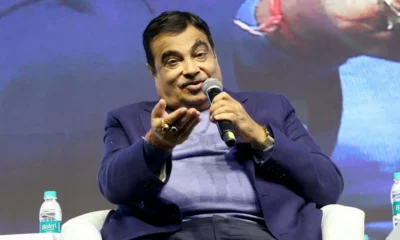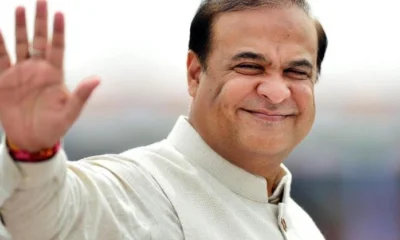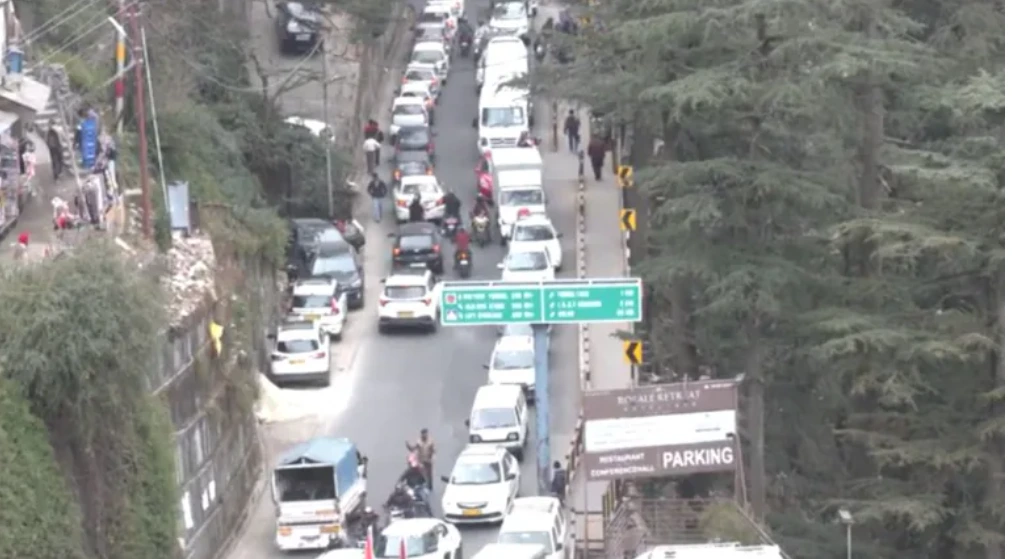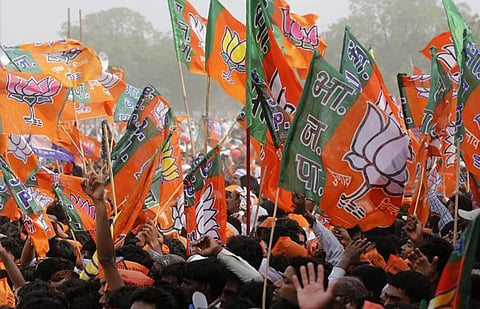Over 19 lakh of the 3.29 crore applicants in Assam were left out of the final National Register of Citizens (NRC) published today (Saturday, August 31), the deadline laid down by the Supreme Court.
However, the publication of the list and the settlement of claims of those excluded after appeals is not going to resolve the political problems over the issue of ‘foreigners’ in Assam. The BJP is against exclusion of Hindus – its vote bank. Assam minister Himanta Biswa Sarma has expressed his dissatisfaction at the list and said it is not going to help get rid of foreigners in the state while many Hindus have been excluded.
Further, those excluded are likely to remain in India as stateless people with no rights as citizens and no entitlements granted to refugees. Where would they be kept is also not clear yet.
The NRC authority headed by the apex court-appointed State Coordinator Prateek Hajela released the final NRC on its official website and through its social media handles at 10 a.m.
State Home Department officials said though the NRC was called ‘final’, the 19,06,657 people excluded would have opportunities to be back on the citizens’ list if they appeal against their exclusion and establish their citizenship via courts.
They have 120 days to file an appeal at any of the existing 100 Foreigners’ Tribunals — 200 more are to be established within a month — which in turn will have to dispose of the cases within six months.
After this, the appellant then has the option of approaching the High Court and Supreme Court.
Going by the cut-off date decided under the Assam Accord, anyone who figured in electoral rolls up to March 24, 1971, or who are descendants of such citizens, are eligible for inclusion in the updated NRC. Various other documents are admissible — such as birth certificates and land records — as long as these were issued before the cut-off date.
Rights groups claim the exercise also made people in Assam — mostly Hindus and Muslims of Bengal origin under suspicion of being illegal immigrants — spend more than Rs 7,800 crore on hearings, besides claiming the lives of around 60 people. Four of them were killed in police firing during a pilot project in western Assam’s Barpeta in July 2010, a few died in accidents during trips to the NRC service centres for hearings, while the rest allegedly died of shock and anxiety because of the fear of becoming stateless.
Releasing the final list, Prateek Hajela said the updating exercise started in 2013 under the apex court’s watch. “The process of NRC update in Assam differs from the rest of the country and is governed by Rule 4A and the corresponding Schedule of the Citizenship (Registration of Citizens and Issue of National Identity Cards) Rules, 2003. These rules were framed as per the cut-off date of the midnight of March 24, 1971, enshrined in the Assam Accord of 1985,” he said.
The process of receipt of NRC application forms started in May 2015 and ended on August 31, 2015. A total of 3,30,27,661 members applied through 68,37,660 applications. The particulars submitted by the applicants were taken up for scrutiny to determine the eligibility of their inclusion in the NRC.
Hajela said updating the NRC was a mammoth exercise involving about 52,000 Assam government officials working for a prolonged period. All decisions of inclusion and exclusion were taken by these statutory officers in an objective and transparent manner.
The applicants were provided adequate opportunities of being heard at every stage of the process conducted as per statutory provisions and due procedure followed at every State, he added.
The complete NRC draft was published on July 30, 2018, wherein 2,89,83,677 people were found eligible for inclusion while 40,007,707 were excluded. Thereafter, claims were received from 36,26,630 people against exclusions. Verification was also carried out of persons included in the draft NRC under Clause 4(3) of the Schedule of the Citizenship (Registration of Citizens and Issue of National Identity Cards) Rules, 2003.
Objections were received against the inclusion of 1,87,633 people whose names had appeared in the complete draft. Another additional draft exclusions list containing 1,02,462 names was published on June 26.
“Taking into account all the persons already included and after disposal of all claims and objections and proceedings under Clause 4(3), a total of 3,11,21,004 were found eligible for inclusion in the final NRC leaving out 19,06,657 people, including those who did not submit claims,” Hajela said.
What happens to those who fail to establish themselves as India citizens after appeal
Although the Assam movement was for deportation, that is unlikely to happen: Bangladesh has never officially acknowledged that any of its citizens migrated illegally to Assam.
Assam has six detention camps – and plans to build more – for illegal migrants within existing jails, and proposes to build a seventh with a capacity for 3,000. These cannot, however, be expected to accommodate all the exclusions, which could finally run into lakhs.
They would officially be non-citizens. What happens to them remains a grey area. India has no fixed policy for “stateless” persons, Home Ministry sources said, according to a report in The Indian Express (IE). The only aspect that is more or less clear is that a “stateless” person will not have voting rights. As of now, nothing is clear about their rights to work, housing and government healthcare and education. There have been suggestions in Assam that they be given work permits — Home Ministry sources said that this may come under consideration — but certain sections have been opposing this idea, too.
Being “stateless” is not the same as being a refugee. India has refugees from Tibet, Sri Lanka (Tamils) and West Pakistan. Among them, only the last group has the right to vote — in Lok Sabha elections but not in Assembly polls. For Tibetans, the government allows Indian citizenship with a rider that they move out of Tibetan settlements and forgo refugee benefits. Under the Tibetan Rehabilitation Policy, 2014, adopted in part by a few states, refugees are eligible for certain benefits under government schemes for labour, rations, housing and loans.
NRC unlikely to resolve the issue
Assam minister Himanta Biswa Sarma says the NRC list intended to identify legal residents and weed out illegal immigrants from the northeastern state cannot be viewed as a “red letter” for the Assamese society. He also indicated clearly that the BJP would not stop with the list.
“We have lost hope in the present form of the NRC right after the draft. When so many genuine Indians are out, then how can you claim that this document is a red letter for the Assamese society,” Sarma told local reporters this morning before the list was released.
“In districts bordering Bangladesh, like South Salmara and Dhubri, the rate of exclusion is the lowest and in Bhumiputra district, it’s high. How it can be? We are not interested in this NRC anymore,” he said.
“NRC is no quarter final, semi-final and final for driving out Bangladeshis…wait a while and you will see more finals under the BJP regime,” he said.
Sarma said: “We just want the NRC to pass off well, peacefully, and we will ensure it, but this NRC won’t help us get rid of foreigners.”
He said the government was already looking beyond and discussions were on both in Assam and at the Centre on new strategy on tackling illegal migrants. “At Dispur and Delhi we have already started fresh strategy on how we can drive out the illegal migrants and we will so come up with new plans,” he said.
Many BJP leaders have raised concerns over a large number of Bengali Hindus being left out of the NRC. Chief Minister Sarbananda Sonowal, after meeting with Home Minister Amit Shah last week, had said the centre may consider a law to remove foreigners who could have entered the list and add genuine citizens who could have been left out.
Timeline of the immigration issue in Assam since Independence to the publication of the final National Register of Citizens (NRC) on Saturday, August 31,2019 (fromThe Hindu)
1950: Immigrants (Expulsion from Assam) Act comes into force following influx of refugees from then East Pakistan to Assam after partition.
1951: First Census of Independent India conducted. Based on Census, first NRC compiled.
1957: Immigrants (Expulsion from Assam) Act repealed.
1964-1965: Influx of refugees from East Pakistan due to disturbances in that country.
1971: Fresh influx due to riot and war in East Pakistan. Independent Bangladesh comes into existence.
1979-1985: Six-year-long Assam agitation, spearheaded by the All Assam Students’ Union (AASU) and All Assam Gana Sangram Parishad (AAGSP) for detection, disenfranchisement and deportation of foreigners.
1983: Massacre at Nellie in Central Assam which claimed the lives of over 3,000 people. Illegal Migrants (Determination by Tribunals) Act passed.
1985: Assam Accord signed by the Centre, the state, AASU and AAGSP in the presence of then Prime Minister Rajiv Gandhi. It stated, among other clauses, that foreigners who came to Assam on or after March 25, 1971 shall be expelled.
1997: Election Commission decides to add ‘D’ (doubtful) against names of voters whose claim to Indian citizenship is doubtful.
2005: Supreme Court strikes down IMDT Act as unconstitutional. Tripartite meeting among Centre, state government and AASU decides to update 1951 NRC. But no major development takes place.
2009: Assam Public Works (APW), an NGO, files case in Supreme Court praying for deletion of foreigners’ name in electoral rolls and updation of NRC.
2010: Pilot project starts in Chaygaon, Barpeta to update NRC. Project successful in Chaygaon. Four killed in violence in Barpeta. Project shelved.
2013: Supreme Court takes up APW petition, directs Centre, state to begin the process for updating NRC. NRC State Coordinator’s office set up.
2015: Updation of NRC process begins.
2017: On December 31 midnight, Draft NRC published with names of 1.9 crore of total 3.29 crore applicants.
July 30, 2018: Another Draft NRC published, 40 lakh of 2.9 crore people excluded.
June 26, 2019: Publication of Additional Draft Exclusion List of 1,02,462 released.
August 31, 2019: Final NRC released.


 India News15 hours ago
India News15 hours ago
 India News16 hours ago
India News16 hours ago
 India News13 hours ago
India News13 hours ago
 Entertainment12 hours ago
Entertainment12 hours ago
 Latest world news11 hours ago
Latest world news11 hours ago
 India News18 hours ago
India News18 hours ago
 India News18 hours ago
India News18 hours ago
 India News13 hours ago
India News13 hours ago














